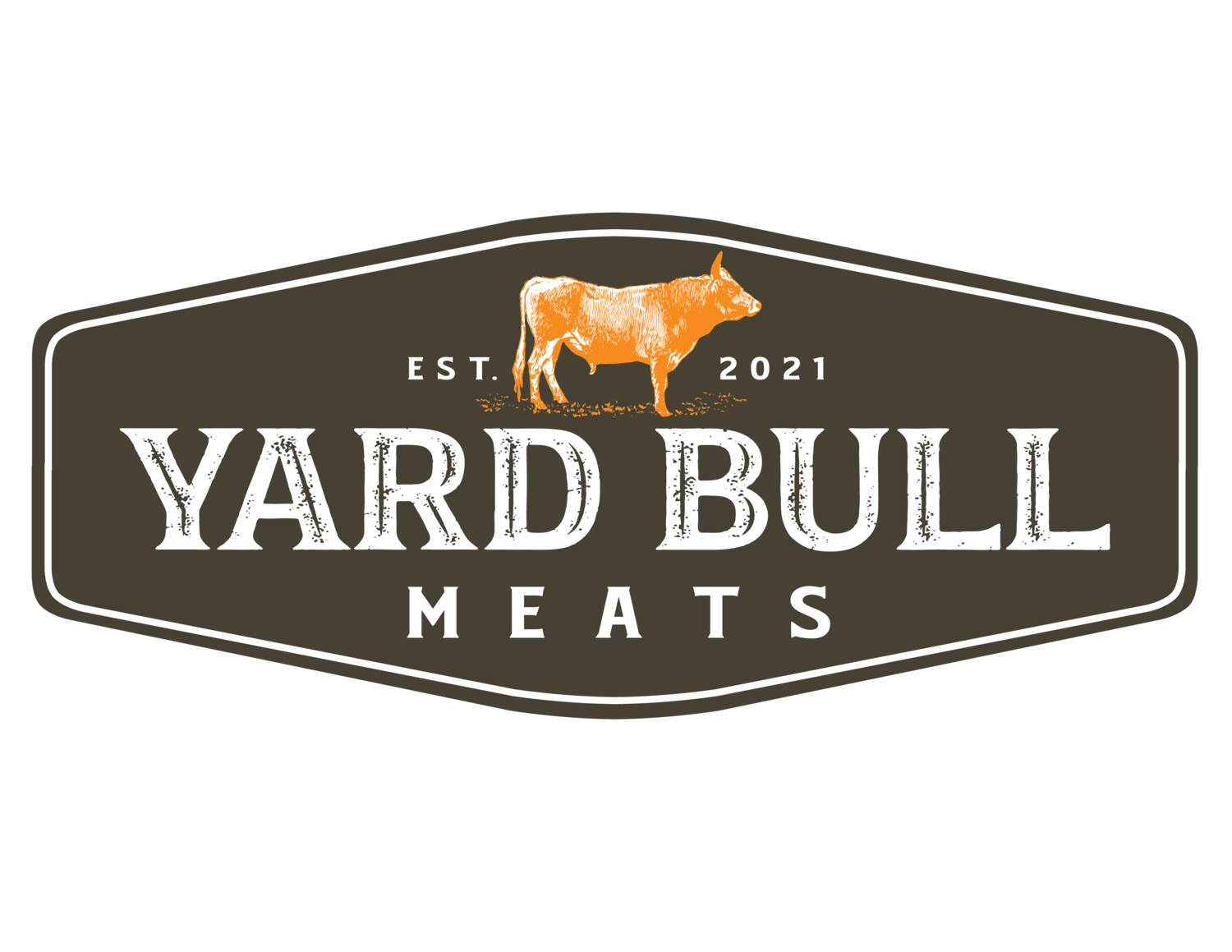TURKEY TIPS
There are probably as many methods to preparing a turkey as there have been Thanksgivings so
the best way to make a bird is the one with which you feel the most comfortable. However, if
you're looking to try something different or need a new place to start, we find this method for our birds to be ideal.
The Bird
First and foremost, it's worth talking about the bird itself. If you've bought a bird from us, it is
likely one of the freshest birds on the market. Generally, if you pick up a bird at a grocery store,
they've been in deep chill and saturated in solution, which is why folks will recommend that you
wet or dry brine to encourage better flavor or texture—buying an older bird affects those
elements. Our birds have been raised by farmers we trust and see their final day as close to
delivery as possible which means they don't need to go through any addition preservation
process. Because our birds haven't touched solution or brine, you're already getting the best in
flavor and texture and we feel comfortable in saying that you don't need to put the extra work into brining your bird.
The Brine
That being said, there's nothing wrong with a little salt. There's something appealing about a piece
of meat being seasoned from the inside-out. There's two schools of thought to brining—the wet
and the dry:
Wet Brine: This is a salty solution to soak the bird in for a day to several days ahead of time. The
general rule of thumb is 1 Gallon of water to 1 Cup of Kosher salt to 1⁄2 cup of sugar (brown or
white, it's up to you). Bring them to a boil to dissolve, let cool completely (fridge temp is ideal),
then soak your bird for at least 24 hours. That's it! You can add any kind of fun aromatics, too like
bay leaf, whole peppercorn, citrus—any kind of flavorful spice or liquid that you like will add a note
of flavor.
One reservation folks have about the wet brine is that it saturates the skin and makes it harder to
get that nice crispy skin when cooking. If you have the time, it's well worth removing the bird from
brine and letting it air dry open in your fridge overnight to dry it out and let any excess purge or
moisture leave the bird.
Dry Brine: This is a process of packing salt and aromatics on the bird to draw out any excess
moisture and slowly season the bird. Combine a good quality kosher salt with any dry aromatics
like citrus zest, coarse pepper, or herbs in a food processor or mortar and pestle until uniform in
consistency. Rub evenly over bird and let sit open in your fridge for 24-36 hours, but probably not
longer or you'll end up with a mummified bird. Rinse the brine off before cooking.
The Bake
So once you've made some decisions about prepping your bird, there's a general meat cooking
tips to know before starting to roast your bird:
• All meat cooks more evenly from room temperature—try to remove your turkey from the
fridge 30-60 minutes before putting it in the oven. This gets the fridge chill off of the meat
and won't alter the temperature of your diligently preheated oven.
• Preheat your oven fully.
• Don't be afraid to season heavily—if you've brined, you've already done this work. If you
haven't, you have a big piece of meat there! A heavy hand with salt and pepper will help all
that meat get well seasoned.
• Use the right pan—a roasting pan with a rack is ideal because it lifts meat off the bottom of
the pan and allows for air flow under it so the base of your meat doesn't get soggy in the
drippings. If you don't have one, any pan with a lip tall enough to contain the bird will do
especially if you can fit a cooling rack in the bottom to lift the bird up).
• Don't overcook it—it sounds a bit silly to state it, but most people leave their birds in the oven too long.
Remember, you can always put it back in, you can't uncook a piece of meat.
This process is made so much easier with a thermometer.
• Let it rest—all of the moisture in your bird is raging hot when you take it out of the oven
and it needs some time to let juices redistribute and the muscle to firm up again. Let your
bird rest for 20-40 minutes or you'll risk all the juices running out. You're going to burn
yourself if you try to carve it right away anyway.
To stuff or not to stuff—if your momma stuffed her bird and you need that tradition, go for it. We
generally find that the addition of stuffing doesn't add anything to the flavor of your bird and it
also needs to cook longer so you risk drying out the meat. We prefer to stuff our birds with
aromatics like onion, apple, lemons, bay leaves, or fresh herbs.
To baste or not to baste—again, we're not going to argue with tradition, but constantly opening
your oven to saturate the skin with liquid not only affects the consistency of your oven
temperature but also runs the risk of making the skin soggy.
Once you're prepared with these bits of knowledge, roasting your bird is pretty simple:
1. Preheat the oven as high as it goes—425 degrees at the very least. Ideally, the oven racks
should be in the center or just below center—make sure you have enough clearance!
2. Place your room temperature bird in a roasting pan, truss if desired, stuff with aromatics
and season with salt and pepper (and whatever else you like—we won't tell). Liberally
apply olive to the outside and butter under the skin.
3. Place the roasting pan in the center of the oven and let roast at high heat for 20 minutes,
30 minutes for larger birds (20+lbs).
4. Lower temperature to 350 degrees and let roast until bird reaches 165 degrees or 5-7
minutes/lb (every oven and every bird is different, ours generally cook faster than grocery
store birds). When you temp your bird, you'll want to stick the thermometer in the breast
and in the thigh without touching bone. If it looks like the skin is browning too quickly, you
can tent a little tin foil over the breast.
5. Remove from the oven, let rest for 30-60 minutes. You have a very big piece of meat—it'll stay
warm. Carve in the kitchen and serve to the table on a platter or tray. If you're concerned
about the bird cooling off too much, you can always carve it, slosh a little gravy or stock in
an oven safe pan (this will keep moisture circulating around the bird), wrap in tin foil, and
place in a warming drawer, a warm but off oven, or a very low temperature.
Carving
There are any number of rules to carving a bird, but in general, these are some basic guidelines:
1. Remove the breast—slide a sharp long or flexible knife down the breast bone and slowly
work your way along the bone down the ribcage. Carve around the front lobe and past the
bottom of the breastbone. Once you reach the bottom of the ribcage, you should have the
whole breast/wing section in your hand. Repeat on the other side.
2. Remove the thigh quarter—run your knife from the back of the thigh towards the front of
the bird. Keep sliding your knife down slowly angling around the hip bones until you've hit
the thigh bone. Using your hands, tilt the thigh quarter away from the body with one hand
and press the body in the opposite direction with your other until the thigh bone pops out
of the joint. Slide your knife in between the two protruding bones to remove the thigh.
3. Separate wings and drums—the wings and the drums are attached in a very similar way that
the thigh is attached to the body. The easiest way is to slide your knife in where either form
a little V, push them apart with your hands, and wiggle your knife in to cut the ligaments
that keeps them attached. The join tends to be closer in towards the breast and thigh than
the visual and it's okay to take off a little of the main muscle.
4. Slice and serve—plate like a pro and slice the breast and thighs before serving. It makes
passing that plate around the table much easier than one person hovering over a bird at the
table. Besides, if you do it in the kitchen, you can pop out the little dark meat 'oysters' from
the back as a treat for all your hard work!

